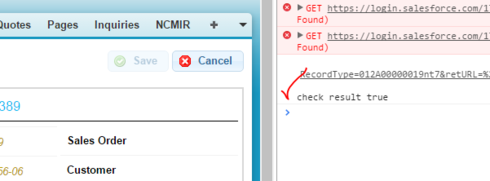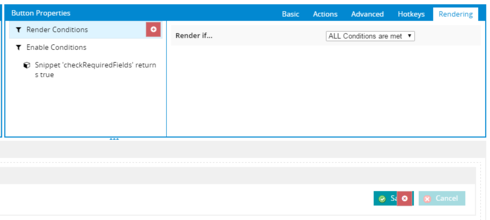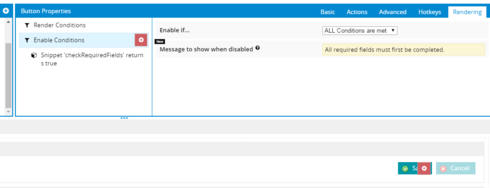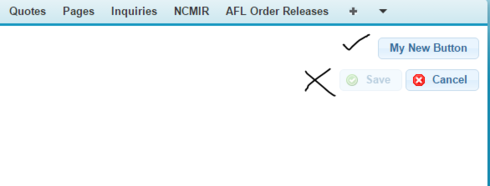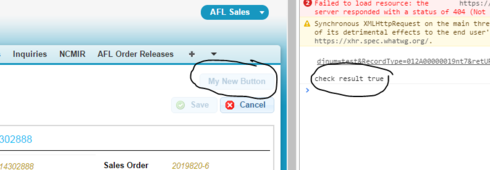I can not get the enabling based on Snippet Returning True to work.
I’ve simplified my snippet down to this:
var enableCheck = true;
console.log('check result ’ + enableCheck);
return enableCheck;
Console returns a true but the button does not enable.
Any hints on how to get this to work?
I’ve tried returning true and “true” and neither are working.
